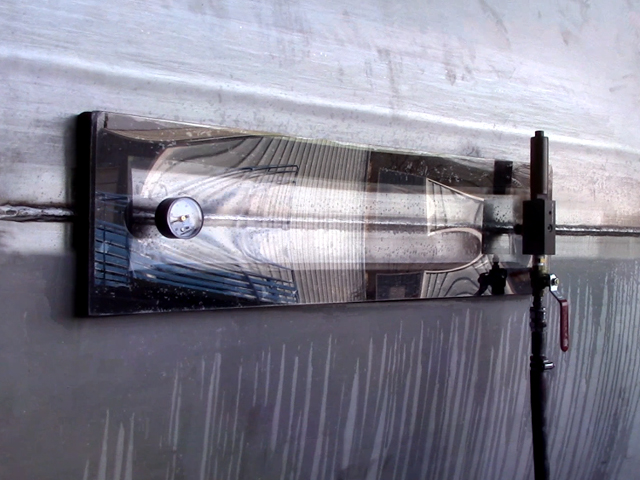
Leak Testing (LT) — High Level of Expertise and Best Quality
The main objective of our company in existence for over 20 years is to strive to fully satisfy our new and existing customers’ needs and expectations; our inspectors observe this principle when carrying out non-destructive testing.
Non-destructive testing (NDT) covers several test techniques. Leak testing (LT) is commonly used to verify the integrity of containers and pressure vessels.
Our prospective and new customers can be sure that each inspection conducted by our company is carried out with maximum efficiency and with compliance with all relevant standards and specifications; this applies to leak testing (LT) as well.
What is leak testing (LT)?
Leak testing (LT) is based on a simple principle of physics; pressure difference is induced on the two sides of the surface to be tested, and then the possible leakage (test medium or charge) is detected by a procedure. When using other methods, it is monitored whether the test piece holds a vacuum or overpressure under test conditions.
A great advantage of the testing method is that it is quick, and local and integral leakage can also be revealed in leak testing.
As seen from the above, leak testing (LT) is a great tool to test the leak-tightness of storage containers, pressure equipment, heat exchanger tubing, assemblies, weld seams, and other enclosed structures. Numerous testing techniques can be applied in leak testing (LT), including, but not limited to, the following:
- Pressure decay leak testing;
- Tracer gas leak testing;
- Hydraulic leak testing;
- Vacuum box technique of bubble leak testing;
- Helium leak testing;
- Acoustic leak detection, etc.
The exact leak location and leak rate are to be determined in leak testing.
Generally speaking, there are relatively considerable differences in the sensitivity of techniques, the complexity of inspection processes, and the costs of inspections.
Our inspectors, thanks to their broad range of relevant expertise, help our customers select the leak testing (LT) methods or a combination of testing methods that is most appropriate for them.

